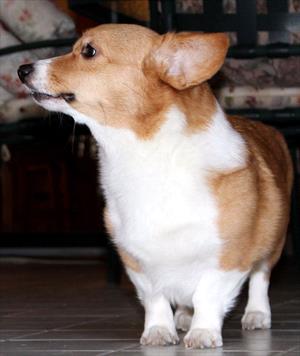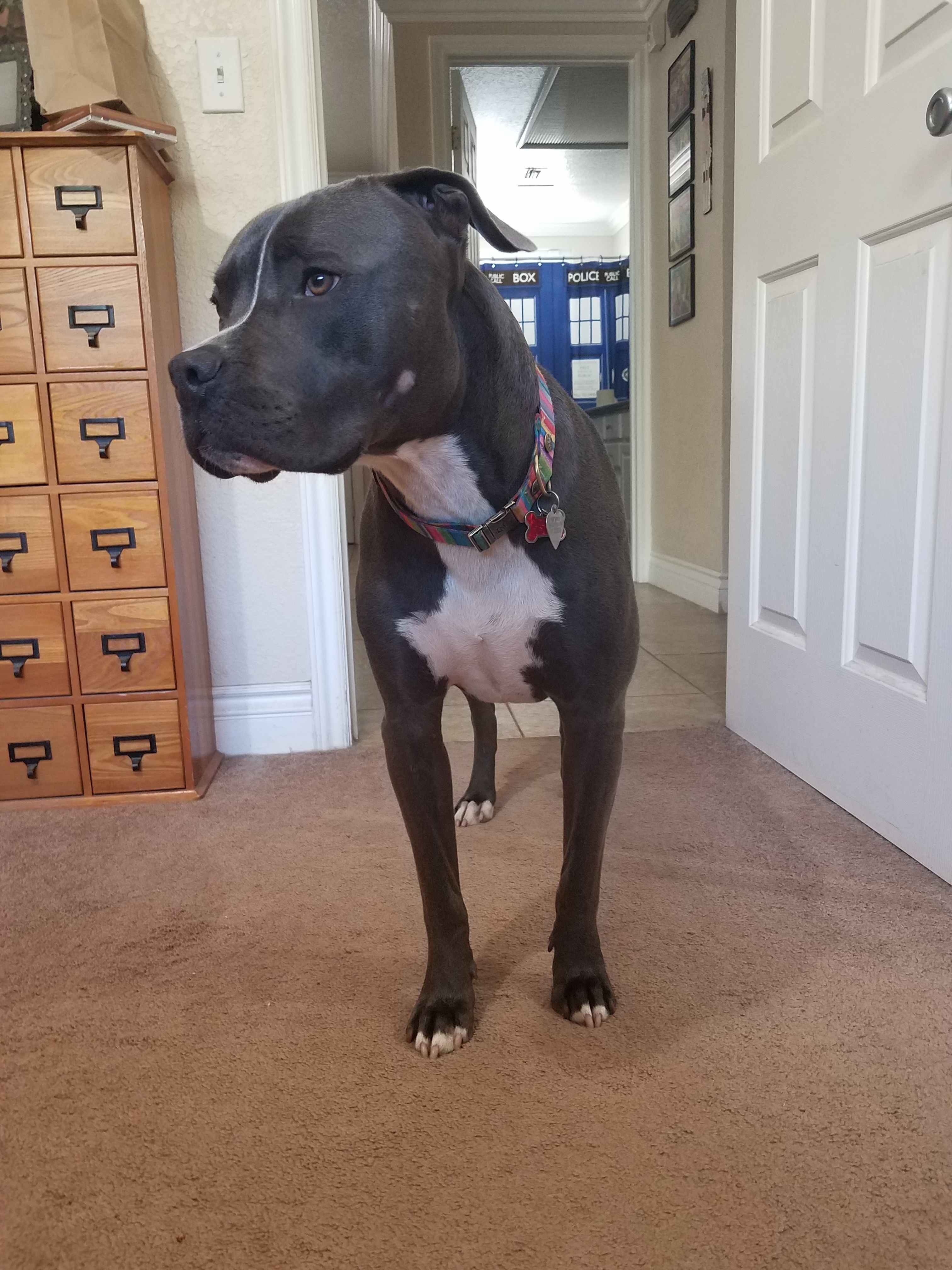Chondrodystrophic dog (Corgi)

The legs of a chondrodystrophic dog are angled and significantly short for his body size. Photo by Michael Johnson/VIN
What is chondrodystrophy?
Chondrodystrophy is the abnormal development of cartilage. It causes the long bones of the body to grow at an abnormal rate and results in shortened legs.
What is a chondrodystrophic breed?
Chondrodystrophic breeds have the short leg, long body look. Classic examples include Dachshunds, Basset Hounds, Beagles, Corgis, English Bulldogs, and others. A chondrodystrophic dog can be a purebred or a mixed breed that inherited the short leg appearance.
Non-chondrodystrophic dog

This dog is non-chondrodystrophic. His legs are straight and proportional to his body. Photo by Cindi Drake/VIN
What is a different ‘normal’?
To get the desired short legged look, certain degrees of limb deformities are selected for in these breeds. These deformities are changes in the shape or size of bones that are considered normal and expected in chondrodystrophic breeds but cause problems in other dogs. In chondrodystrophic dogs, one of the bones in the forelimb, the ulna, grows in an abnormal direction. This causes the other bone, the radius, to grow in a curved manner instead of straight. This curved bone contributes to the bow-legged appearance and is a normal finding as long as it does cause any problems for the dog.
When the legs are not as straight as they should be, it is called an angular limb deformity. This can occur in any limb. It results in toes pointing outward to the sides (duck-toed) or pointing inward towards the body of the dog (pigeon-toed). The former is common in the front legs; the latter is common in the back legs. Either way, the toes do not point forward. This is a common finding in chondrodystrophic dogs.
Another trait of chondrodystrophic breeds is misalignment of elbow bones. The bones of the elbow are meant to click into place like puzzle pieces; this does not happen in these dogs. Similar to other skeletal deformities, veterinarians don’t recommend fixing the elbow unless they cause problems for the dogs. Many dogs with this deformity move around fairly well.
Are any diseases associated with chondrodystrophy?
Many times deformities of chondrodystrophic dogs are excessive and cause enough problems walking that it’s a good idea to see a veterinarian. Some limb deformities lead to increased stress on nearby joints, resulting in joint instability, partial dislocation of bones (subluxation), pain, reduced range of motion, and lameness. The elbow joint is commonly affected but other joints are as well. Over time, these joints are more likely to develop arthritis.
Chondrodystrophic breeds are predisposed to specific diseases and conditions. One such condition is an ununited anconeal process. The anconeal process is a small projection of bone on the ulna, one of the bones in the dog’s forelimb. An ununited anconeal process means this part of the bone did not unite or fuse; this contributes to elbow instability, pain, and lameness. Chondrodystrophic dogs are also predisposed to canine intervertebral disc disease, or IVDD. This disease also causes front limb problems and lameness but is an issue within the spinal column.
Intervertebral discs are sponge-like cushions that sit between the bones in a dog’s spinal column. They provide flexibility and allow mobility of the spine during everyday movement. Chondrodystrophic breeds are associated with the premature deterioration of these discs causing disease. IVDD is a serious, expensive disease with high rates of mortality. In some cases, it can be painful enough to strongly consider euthanasia. As an owner, it is important to be aware of the risk of IVDD and other diseases of chondrodystrophic breeds; these risks should be considered before purchasing a pet.
How do I treat my chondrodystrophic dog?
Owning and caring for a chondrodystrophic dog is more about preparation and awareness than prevention and treatment. As mentioned earlier, many limb deformities do not need to be treated. To an extent, the limb deformities are necessary and desirable; they help create short stature. Chondrodystrophic dogs live well with deformities that cause pain and lameness in non-chondrodystrophic breeds. If your dog does show signs of discomfort or lameness seek veterinary care. In some cases, these symptoms are temporary growing pains; time will tell. In other cases, they indicate a severe deformity and need to be addressed. Treating these severe deformities involves medical management, exercise restriction, and possible surgical intervention.
There is no current scientific evidence that chondrodystrophic dogs need to be restricted in jumping up and down, running or other movements to prevent IVDD. This disease is genetic and occurs regardless of activity. If you are set on owning a chondrodystrophic dog, educate yourself on the particular diseases your dog may get and consider creating a savings account and/or buying pet insurance; your dog may need expensive medical treatment at some point in their life.
What about genetic testing?
Recently, scientists have discovered mutations associated with a higher risk of IVDD in chondrodystrophic dogs. Some laboratories offer genetic testing. While this is one step closer to reducing an often fatal disease, more research is needed to determine how test results should influence owners and breeders. As an owner of a chondrodystrophic breed, tt may be more cost-effective to save for potential treatment than to spend on a genetic test. As a breeder of a chondrodystrophic breed, it is important to discuss this test with your veterinarian.
Chondrodysplasia is an abnormal finding in some breeds and there is a genetic test available for breeders seeking to eliminate the trait from their breeding program. Breeds like the Australian Shepherd, American Cocker Spaniel, and Chesapeake Bay Retriever are among those in which the condition is considered abnormal and undesirable.